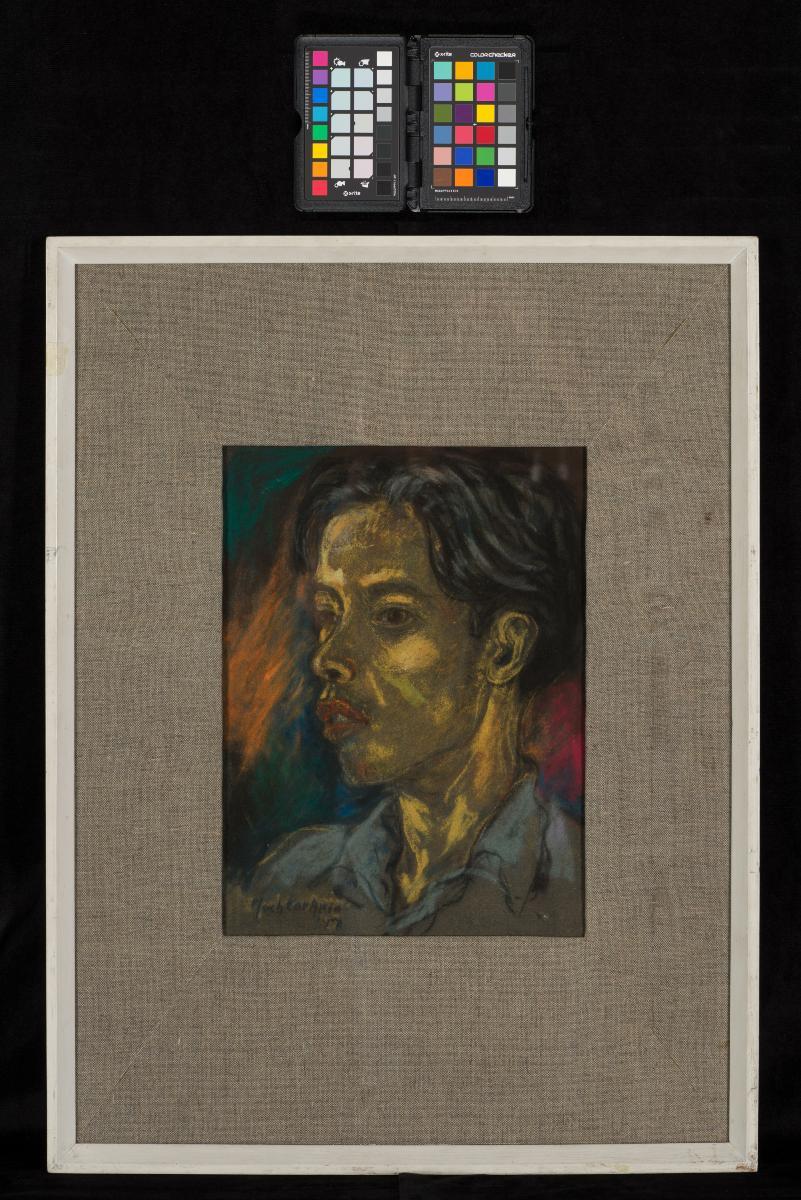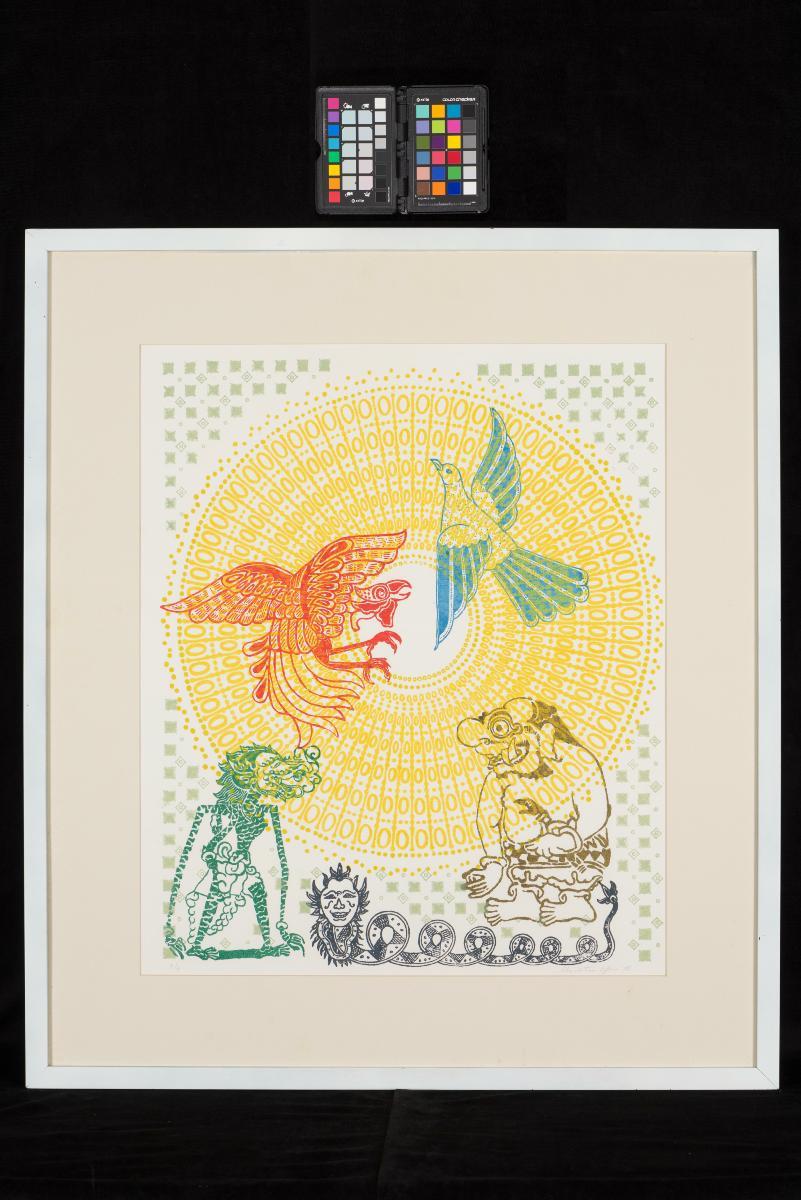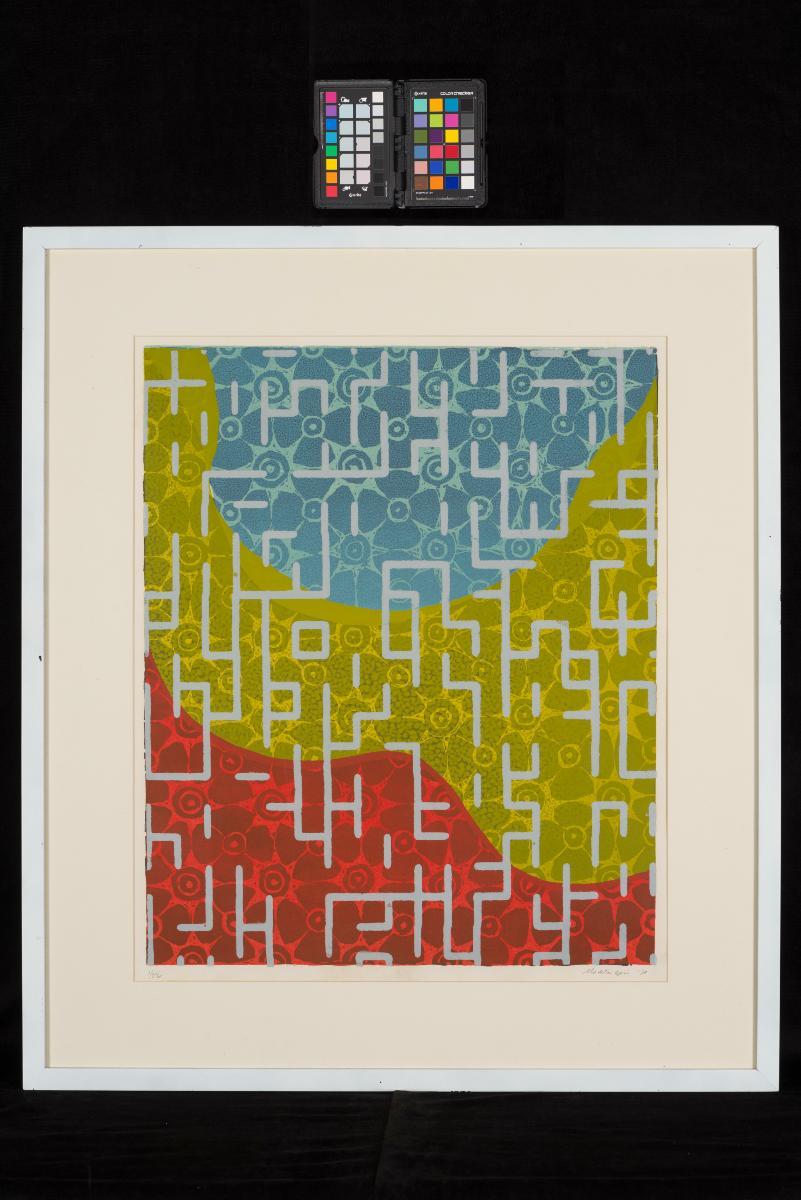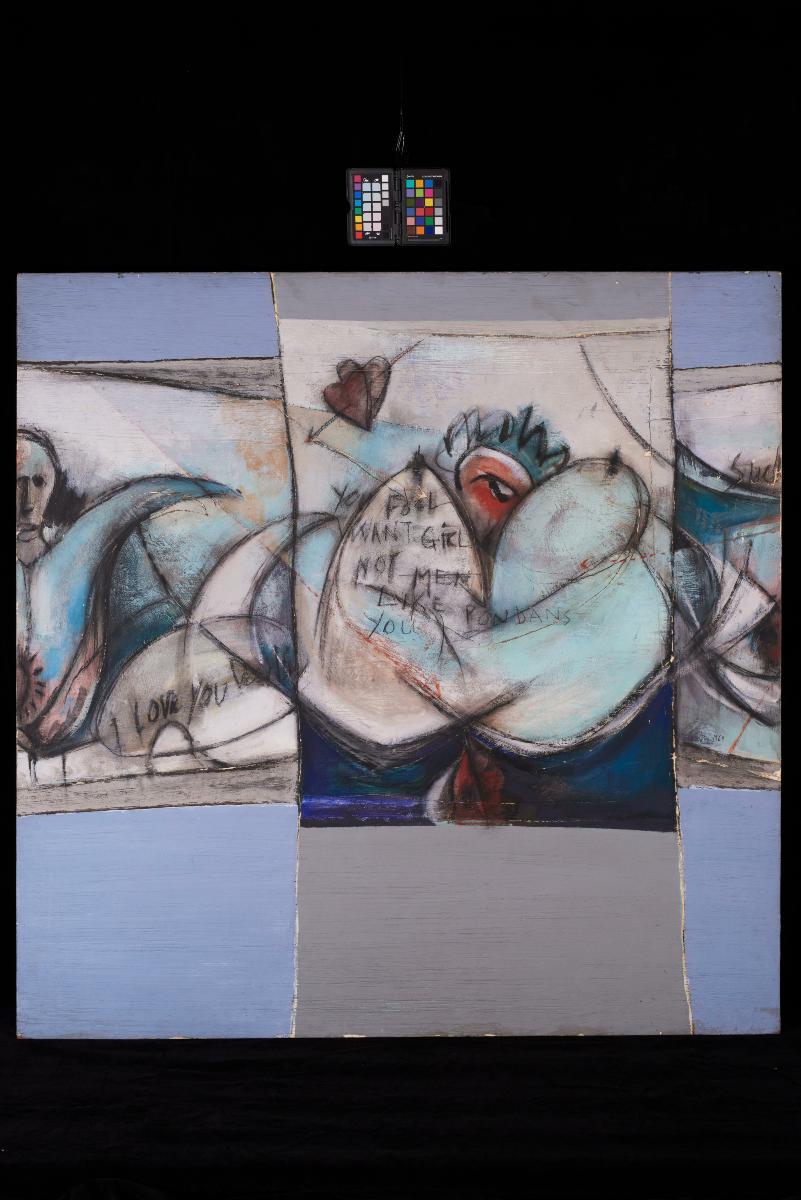Executed after the Japanese Occupation, the work is a portrait of one of the most important poets in Southeast Asia. Here we can still observe Apin’s impressionist tendencies, similar to the works done during his PERSAGI days. Together with Chairil Anwar, Apin was also part of the Gelanggang group of artists and writers. The group played an important role in the discourse of Indonesia’s cultural identity during the post-colonial period as outlined in the Gelanggang Manifesto of 1946.















